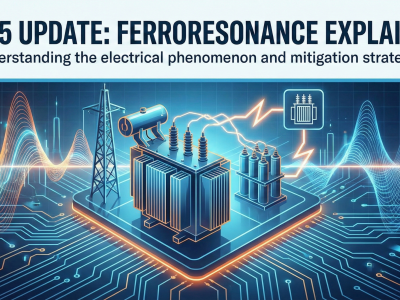Jim Vaughn, CUSP

Jim Vaughn, CUSP
After 25 years as a transmission-distribution lineman and foreman, Jim Vaughn, CUSP, has devoted the last 24 years to safety and training. A noted author, trainer and lecturer, he is a senior consultant for the Institute for Safety in Powerline Construction. He can be reached at jim@ispconline.com.

2025 Update: Ferroresonance Explained
Ferroresonance is a complicated issue, one that industry workers must be educated about. That’s because as the number of URD system installations grows and systems age, instances of ferroresonance increase – as do threats to worker and customer safety, equipment and service reliability. I first became acquainted with ferroresonance in the 1980s while troubleshooting a […]

December 2025 Q&A
Q: Can I ground through a wave trap? A: General discussion about wave or line traps centers on their function. At operating frequency, they have extremely low impedance to any voltage at 60 Hz. Some would say that for the sake of convenience, it’s OK to ground at a switch even where there is a […]

Addressing the Elephant in the Room
There is an elephant in the room that plays a role in the safety culture of our industry. That elephant needs to be exposed, even though it’s going to be tough to do. Based on a less-than-official count, 12 to 14 lineworkers have lost their lives on the job over the past six months. The […]

October-November 2025 Q&A
Q: We hear lots of opinions about whether a lineworker can lift a hot-line clamp that has a load on it. There is a rule that says disconnects must be rated for the load they are to break. We’ve been doing it forever. Are we breaking an OSHA rule or not? A: We have answered […]

Equipotential Grounding for URD Work
I have written about grounding for the protection of employees numerous times in Incident Prevention magazine, addressing both the law and other issues. Let’s begin this installment with the understanding that “grounding for the protection of employees” – which is the phrase OSHA uses – means establishing an equipotential zone or EPZ. The purpose of […]

August-September 2025 Q&A
Q: If a crew is setting a steel pole between energized phases (69 kV), would the 3.29-foot minimum approach distance found in OSHA Table 6 apply, or should we defer to the 15-foot clearance? A: Setting poles is new construction that OSHA covers in 29 CFR 1926.960, Table V-5, “Alternative Minimum Approach Distances for Voltages […]
OSHA-Compliant Employee Training
“Yes, we are OSHA compliant. Our apprentice lineworkers are trained and certified by a local line school, which guarantees that the training they deliver meets OSHA standards. Every six months, we send the apprentices to the school for two weeks of hands-on training. They also take online classes in between the hands-on sessions; the online […]

June-July 2025 Q&A
Q: Can you direct us to information regarding “fuzzing” or “noisy tester” voltage detectors? We’ve heard that with noisy testers, there’s potential for both false negatives (no voltage is detected although it’s present) and false positives (voltage is indicated where none exists). We’ve also heard a noisy tester can be triggered by induction on a […]
Equipotential Grounding is the Law
I’ve written about equipotential grounding for Incident Prevention magazine dozens of times over the past 15 years, both in this column and in the Q&A. Those articles have had thousands of views on Incident Prevention’s website, which suggests that their messaging should be getting through to industry employers and lineworkers – but my experience says […]

April-May 2025 Q&A
Q: I’m a municipal utility substation engineer, and I’m hoping you can help me with this question: Does an engineer taking photos in a substation fall under the OSHA 29 CFR 1910.269 work rules? A: The simple answer is yes. No matter your training or education, if you must be inside the fence to take […]

